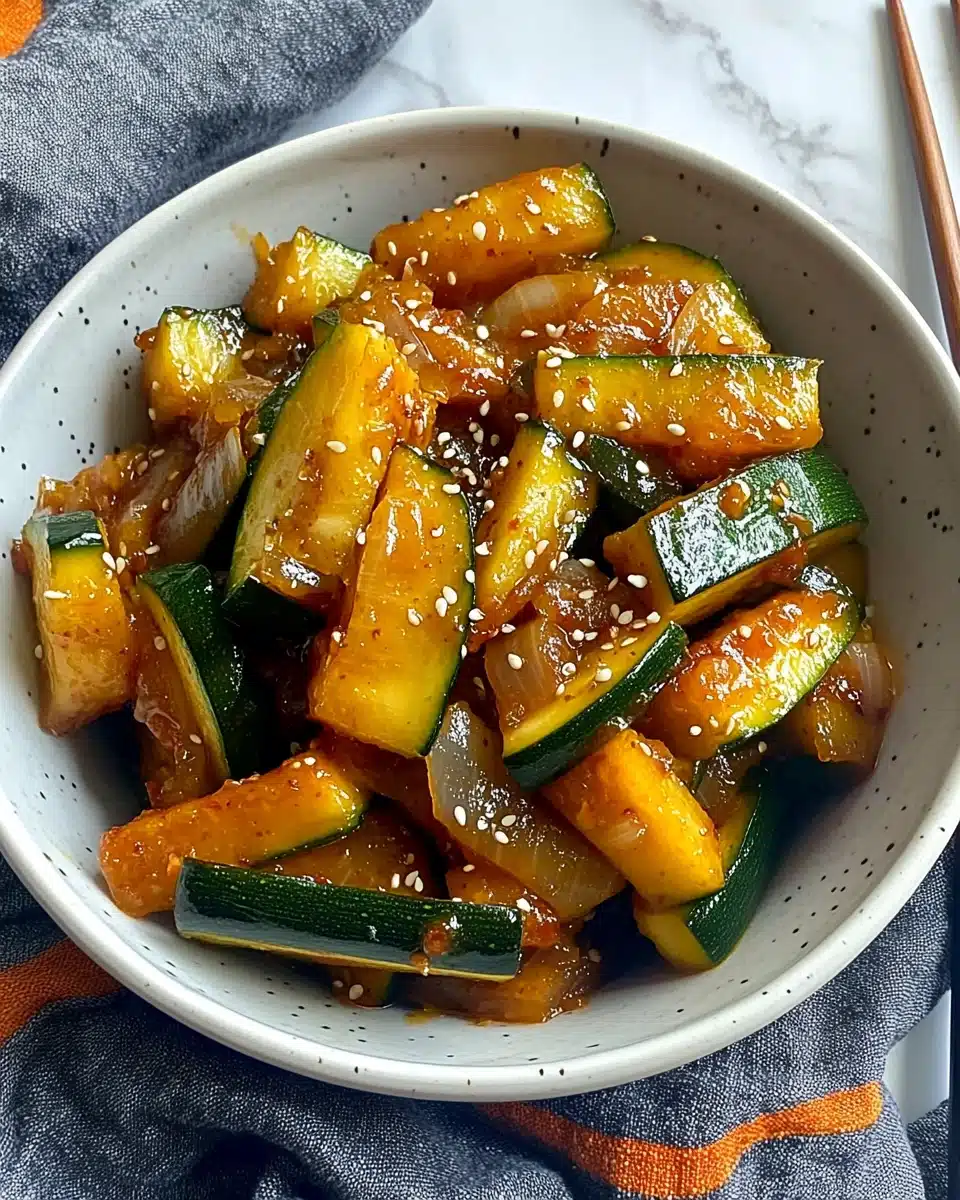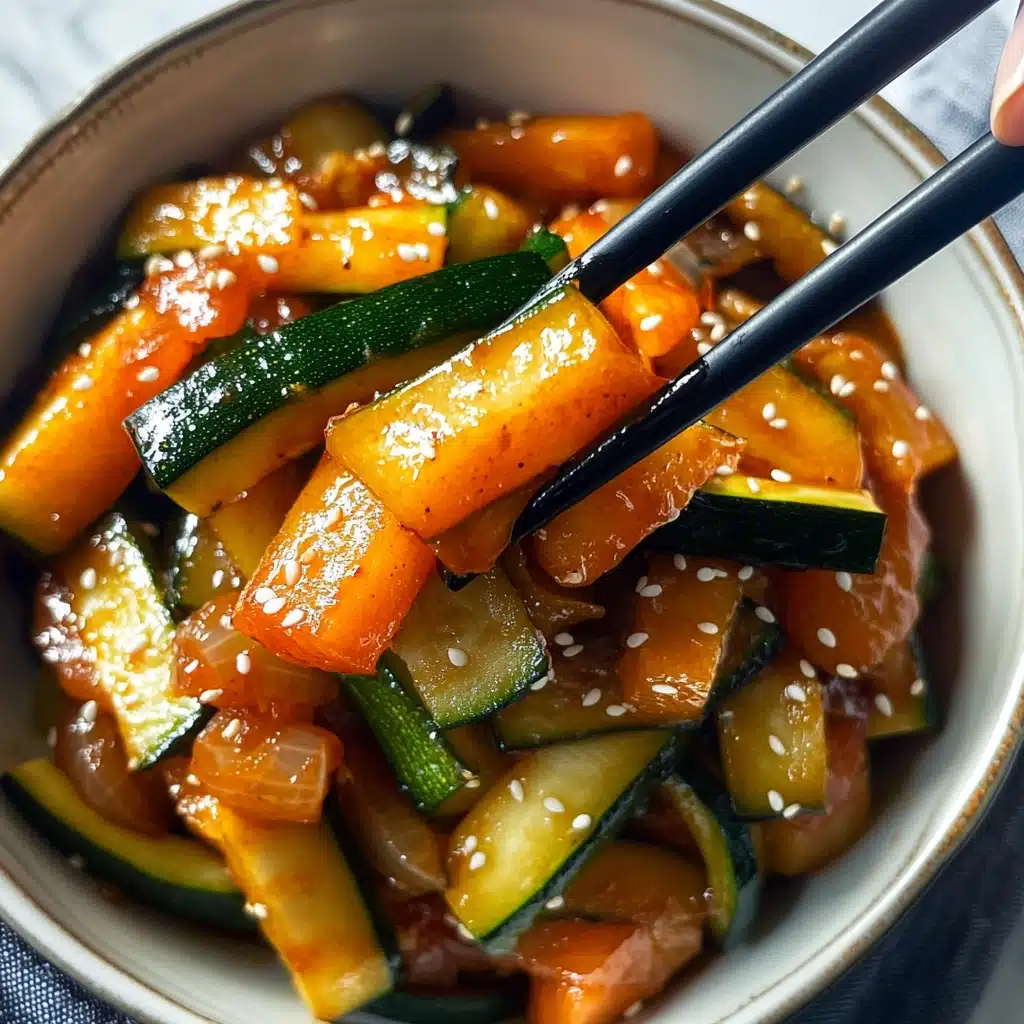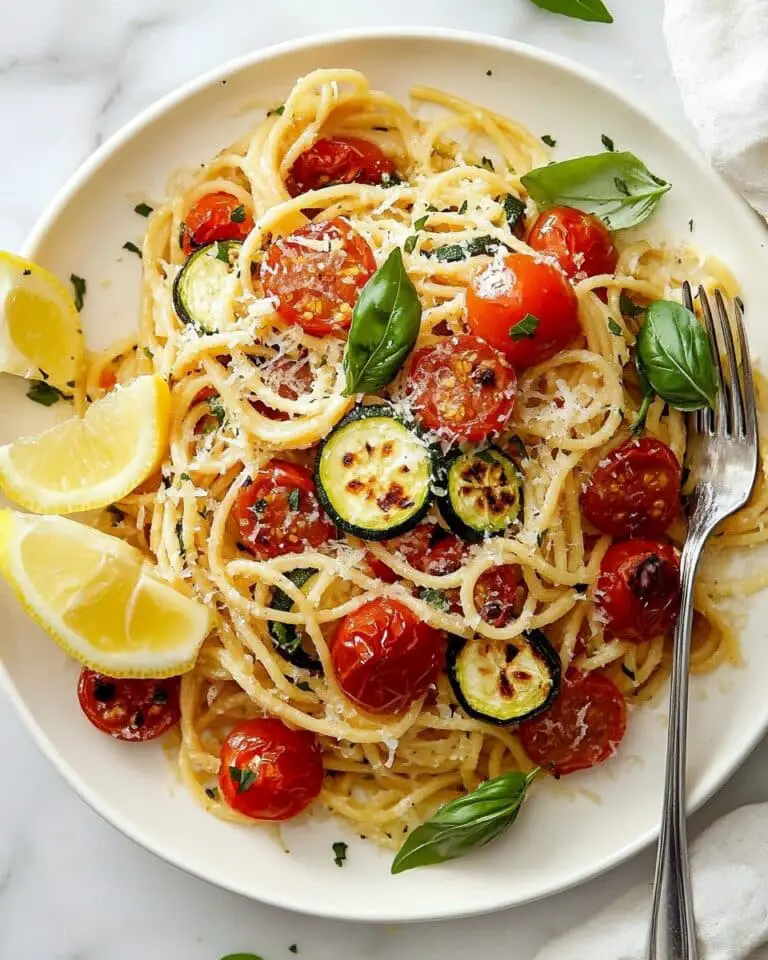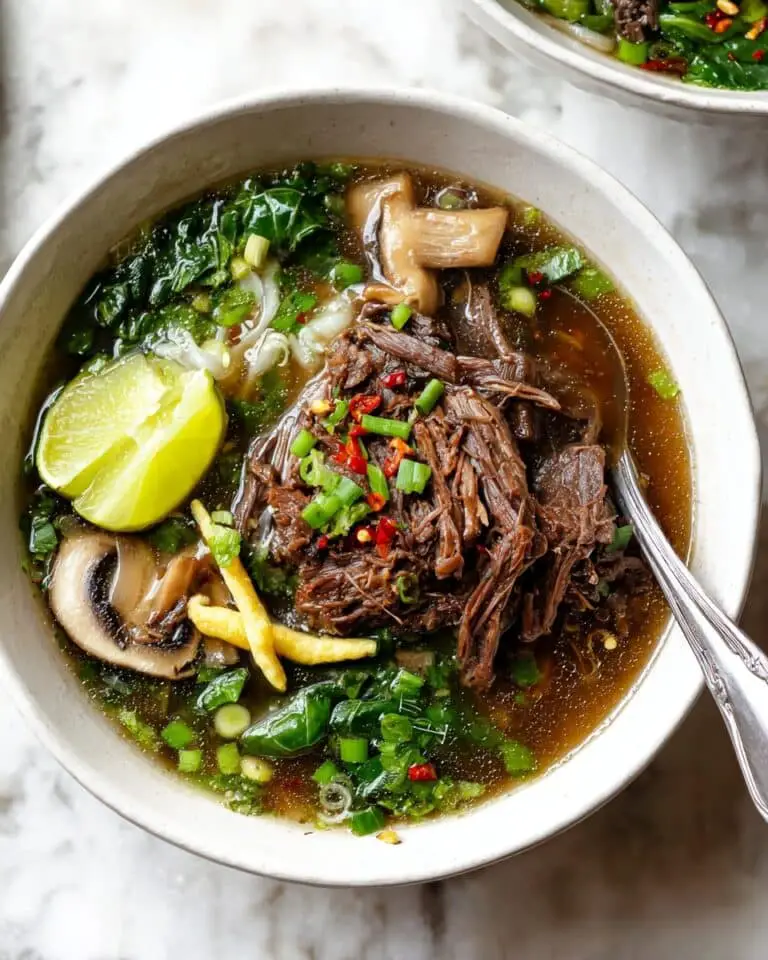There’s something irresistibly magical about Hibachi Vegetables—crisp-tender zucchini and onion tossed in a hot skillet, kissed with sesame oil, and sprinkled with toasty seeds and a splash of soy. This simple dish transforms basic veggies into a restaurant-worthy side that steals the show every single time.
Why You’ll Love This Recipe
- Restaurant-Style Magic at Home: Unlock that classic hibachi sizzle and flavor with just a few simple ingredients and your favorite skillet.
- Ready in Minutes: From prepping to plating, Hibachi Vegetables come together in less than 15 minutes—perfect for busy weeknights or last-minute cravings.
- Vibrant and Versatile: This recipe is a blank canvas—use it as a side, a topping for rice bowls, or even stuffed in wraps or sandwiches.
- Crowd Pleaser: Even veggie skeptics can’t resist the bold, savory flavors and delightful crunch!
Ingredients You’ll Need
The beauty of Hibachi Vegetables is in its simplicity: each ingredient is chosen for a reason, bringing delicious flavors, colors, and a touch of irresistible texture. You likely have most of these on hand already!
- Sesame oil: Toasty and aromatic, it infuses every bite with that signature hibachi flavor.
- Onion: Slicing into half-moons gives you juicy, sweet pieces that caramelize beautifully.
- Zucchini: Pick medium zucchinis for the best texture—cutting them into thick sticks keeps them crisp-tender, not mushy.
- Soy sauce: Adds a savory, umami punch and helps the veggies get that gorgeous golden color.
- Sesame seeds: These tiny pops provide a subtle crunch and a nutty finish the dish just wouldn’t be the same without.
- Kosher salt: Brings out the natural sweetness of the vegetables.
- Black pepper: Adds mellow heat and rounds out all the flavors.
Variations
Don’t be afraid to put your own spin on these Hibachi Vegetables! This recipe is endlessly adaptable, so you can tailor it to your taste buds, fridge contents, or dietary preferences without missing a beat.
- Add more veggies: Throw in mushrooms, bell peppers, or broccoli florets for extra color and variety—just add heartier veggies first so everything cooks perfectly.
- Spice it up: Sprinkle with a little crushed red pepper or a drizzle of Sriracha if you love a little heat with your savory goodness.
- Gluten-free option: Swap the soy sauce for tamari or coconut aminos to make this dish completely gluten-free (and just as delicious!).
- Garlic twist: Sauté a minced garlic clove along with the onions for an extra fragra…ant punch.
How to Make Hibachi Vegetables
Step 1: Prep Your Skillet
Start strong by heating your largest skillet—preferably cast-iron or stainless steel—over medium-high heat. Once it’s hot, add in one tablespoon of sesame oil and let it warm up for about 30 seconds. The sizzle you hear is the promise of delicious caramelization ahead!
Step 2: Sauté the Onions
Toss in your sliced onions and let them cook for about three minutes, stirring occasionally. You’re aiming for golden edges with a touch of tenderness—the natural sweetness starts to bloom as they brown up just right.
Step 3: Add the Zucchini
Slide the zucchini sticks into the pan with your onions. Cook for another 4 to 5 minutes, resisting the urge to stir constantly—you want both the onion and zucchini to get that irresistible sear along the edges.
Step 4: Finish with Flavor
Pour in the remaining sesame oil, soy sauce, sesame seeds, salt, and pepper. Give everything a gentle toss and cook for 1 to 2 more minutes, just until your Hibachi Vegetables are tender-crisp and coated in that savory glaze. Serve right away while they’re irresistibly aromatic!
Pro Tips for Making Hibachi Vegetables
- High Heat = Golden Edges: Don’t fear a hot pan! High heat helps your Hibachi Vegetables develop that signature char and deep flavor.
- Minimal Stirring for Maximum Flavor: Let the veggies rest undisturbed after adding to the pan—this allows beautiful caramelization on the edges.
- Cut Evenly for Even Cooking: Aim to slice your zucchini and onion into similar sizes so everything cooks at the same pace.
- Finish with Toasted Sesame Seeds: For next-level flavor, give your sesame seeds a quick toast in a dry skillet before adding them for the final touch!
How to Serve Hibachi Vegetables
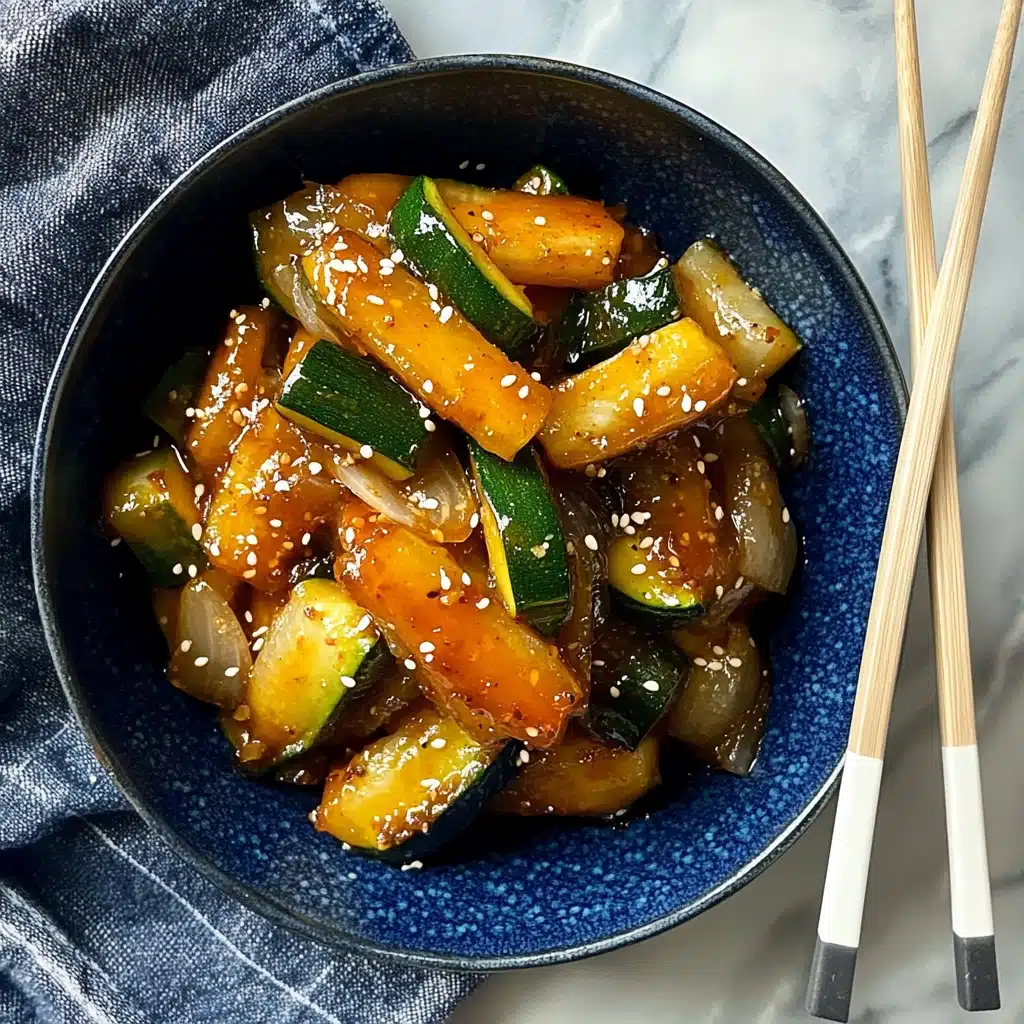
Garnishes
I love to scatter a final flourish of extra sesame seeds right before serving—sometimes with a sprinkle of chopped green onions or a tiny drizzle of sesame oil for even more wow factor. For a special occasion, a sprinkle of black sesame seeds or a few torn cilantro leaves creates visual flair and a tiny boost in flavor.
Side Dishes
Hibachi Vegetables are fantastic paired with steamed white rice, fried rice, or crisp tofu. They also shine next to grilled chicken, salmon, or other classic hibachi mainstays. You can even tuck them into rice bowls with edamame or serve alongside gyoza for a homemade Asian-inspired feast!
Creative Ways to Present
Try filling a shallow serving platter with your Hibachi Vegetables and nestling them alongside a mound of rice for a colorful, takeout-style spread. Or, spoon them into lettuce cups for a light, party-friendly appetizer. For meal preppers, layer them into bento boxes—they keep their texture and brighten up any lunch break.
Make Ahead and Storage
Storing Leftovers
Cool any leftover Hibachi Vegetables to room temperature before transferring them to an airtight container. They’ll keep well in the fridge for up to three days, making them a fantastic make-ahead meal companion.
Freezing
If you’d like to freeze your veggies, let them cool completely, then spread them out on a tray to freeze quickly before storing in a freezer bag for up to one month. Keep in mind, their texture may soften a bit upon reheating, but the flavor will still sing.
Reheating
For best results, quickly reheat Hibachi Vegetables in a hot skillet with a splash of oil or water—this revives that great sizzle and keeps everything vibrant. The microwave works in a pinch, but a stovetop reheat is worth the tiny bit of extra effort.
FAQs
-
Can I use other vegetables in Hibachi Vegetables?
Absolutely! Feel free to add mushrooms, carrots, bell peppers, broccoli, or snap peas—just adjust the order you add them so that everything ends up perfectly cooked.
-
What if I don’t have sesame oil?
While sesame oil is classic for that distinctly nutty flavor, you can use a neutral oil (like canola or vegetable) and add a few drops of toasted sesame oil at the end, or skip it for a milder flavor.
-
How do I keep the vegetables from getting soggy?
Make sure your skillet is nice and hot before you add the veggies, and don’t overcrowd the pan. High heat and a bit of patience for browning deliver that craveable, crisp-tender bite!
-
Are Hibachi Vegetables vegan and gluten-free?
The base recipe is vegan as written, and can easily be made gluten-free by swapping soy sauce for gluten-free tamari or coconut aminos—delicious and inclusive!
Final Thoughts
I hope you give these Hibachi Vegetables a try soon—they’re one of my favorite ways to bring bold, restaurant-style flavor into my own kitchen with hardly any fuss. Whether you’re serving them up as a side or making them the centerpiece of your meal, be ready for plenty of happy forks and seconds!
Print
Hibachi Vegetables Recipe
- Prep Time: 10 minutes
- Cook Time: 10 minutes
- Total Time: 20 minutes
- Yield: 4 servings
- Category: Side Dish
- Method: Stovetop
- Cuisine: Asian
- Diet: Vegetarian
Description
Enjoy a delicious and flavorful dish of hibachi vegetables cooked to perfection. This recipe combines the savory taste of sesame oil, soy sauce, and sesame seeds with the natural goodness of onions and zucchinis.
Ingredients
For the Hibachi Vegetables:
- 2 tablespoons sesame oil, divided
- 1 medium onion, cut into 1/2-inch slices 2 to 3 inches long
- 2 medium zucchinis, cut into 1/2-inch sticks 2 to 3 inches long
- 2 tablespoons soy sauce
- 1 tablespoon sesame seeds
- 1/2 teaspoon kosher salt
- 1/2 teaspoon black pepper
Instructions
- Preheat Skillet: Preheat a skillet on medium-high heat. Add 1 tablespoon of oil and let it heat for 30 seconds.
- Cook Onions: Cook onions for 3 minutes.
- Add Zucchini: Add zucchini and cook for 4 to 5 minutes, allowing them to brown slightly.
- Season: Add remaining oil, soy sauce, sesame seeds, kosher salt, and black pepper.
- Finish Cooking: Cook for 1 to 2 more minutes until vegetables are cooked through.
- Serve: Serve warm and enjoy!
Nutrition
- Serving Size: 1 serving
- Calories: 120
- Sugar: 6g
- Sodium: 700mg
- Fat: 8g
- Saturated Fat: 1g
- Unsaturated Fat: 6g
- Trans Fat: 0g
- Carbohydrates: 10g
- Fiber: 3g
- Protein: 3g
- Cholesterol: 0mg

